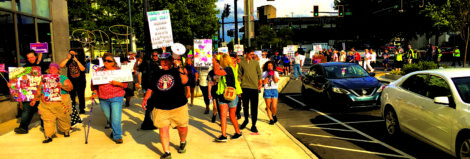Seven school levies keep Poland district humming
POLAND — The Poland Local School District has seven levies on the books, with one for permanent improvements and the others for operating expenses. Two of the six are continuous levies, while the remaining four are listed as emergency levies.
In essence, Poland voters have to vote on emergency levy renewals in four out of every five years. It can sometimes seem like as one gets renewed, another appears.
“Passing the emergency levy renewals has been a part of our school district’s financial history dating as far back to the 1980s,” Superintendent Craig Hockenberry said. “Our emergency levies fund millions of dollars that are built into our forecast to operate our school system. Failing any of the renewals would negatively impact our operations almost immediately. The impact would hit the most important areas of our district: teaching / learning and our ability to repair and update our facilities.”
Each levy plays a role in the district and can have a big effect on the five-year forecast. Each fall, school district treasurers in Ohio are required to submit a five-year forecast to the state. The forecast is a way to look down the road and make necessary changes to keep the district afloat financially.
LEVIES IN THE DISTRICT
A 1-mill permanent improvement levy was first approved by voters Nov. 8, 1977, as a five-year levy. Voters renewed every five years since (nine times), with the latest renewal in 2022.
“The permanent improvement levy has specific uses by law,” Treasurer Janet Muntean said.
She said it mostly covers capital improvement projects that have a specific life span.
Poland’s general fund levy was first passed in 1976 and has an effective rate of 25.20 mills under Ohio House Bill 920. Because it is a continuous levy, it never has to be voted on.
A second continuous levy is the Current Expense Levy passed in 1988. This levy, also under HB920, has an effective rate of 2.90. The two levies account for more than half of the district’s approximate $15 million general property tax revenue, according to Muntean.
On the renewal side of the levy card are the district’s four emergency levies.
The oldest one was first passed in 1984. Muntean did not have the information available on why it was listed as a new levy in 1989, but it has been renewed every five years since, the latest being a close call March 19. It brings in $1.06 million for district operations. It originally passed as a 5.4-mill levy in 1984 and currently collects at 1.77 mills.
The second emergency levy was passed in 2001, and combined three existing levies into one. It was renewed in 2006, 2011, 2016 and 2021. Muntean said the levy collects at 3.4 mills and brings in $1.3 million.
“We will be placing it for renewal in 2025,” she said.
The third emergency levy is a 6.9-mill levy passed in 2003. It was renewed in 2008, 2013, 2018 and 2023 and currently collects at 5.08 mills. It brings in $2.2 million.
The final emergency levy is a 5.9-mill levy first passed in 2012 and renewed in 2017 and 2022. That levy brings in $2.1 million and currently collects at 4.9 mills.
“All four emergency levies total approximately $7 million, which is almost half of our generated property tax revenue for operations,” Muntean said.
That revenue goes to expenditures such as personnel services, employee benefits, purchased services, supplies and materials, capital outlay and intergovernmental and debt services.
The four levies are still listed as emergency levies because the law requires them to keep the original title “Emergency Levy.”
All four collect at a lesser rate than when originally passed due to Poland’s valuation. Muntean said Poland’s valuation consists of residential, commercial, agricultural and public utility properties. It is currently a $602 million valuation as she said is determined by the Mahoning County auditor.
Muntean said there is no big concern over the district’s two continuous levies. Those will simply continue bringing in funds. The emergency levies are a concern though.
“The (1989) renewal that passed on April 19 was the closest margin I’ve seen,” she said. There were 4,269 people who voted, “and the levy only passed by 201 votes. I blame the economy and the new property valuations.”
Muntean said this year’s levy was the lowest of the four emergency levies. It brings concern over the passage of the next three, which will be on the ballot in 2025, 2026 and 2027.
FORECAST
Muntean is working on the five-year forecast required by the state. The forecast looks at the current and following four years to determine where the spending is at. The goal is to stay away from deficit spending. The loss of any of the emergency levies would throw the district into deficit spending and affect what the district can do.
“You have to monitor the future when considering entering into contracts,” Muntean said. “The budget has to support long-term decisions.”
She said the state also watches the forecasts closely and steps in with recommendations when it’s in the red. She said it happened in 2017 and the state made recommendations. The board gets the final say, and the decision back then was to close schools and not replace staff through attrition. Those moves helped keep the five-year forecast from entering deficit spending.
At present, the forecast is showing negative numbers for 2025 through 2028, but those numbers fully rely on the emergency levies. Muntean said in the forecast, she has to show the levies that are in place and approved by voters. For 2025 and the following three years, she has to place the levies up for renewal in a different line. It is separated until the levy passes, at which time it will be added in. With the next four levies added in, if they are passed, the district will have a balanced bottom line.
“Each of those emergency levies are vital to the district’s daily operations,” Muntean said. “Take one out of the picture and we will be thrown into deficit spending.”
One other point in the levy explanations is related to how revenue grows. Muntean said the four emergency levy renewals will never bring in more than the amount they were originally passed for. They may collect at a lower millage, but only because more homes or businesses were built and the valuation for Poland goes up, or in other words, more are sharing the same load.
As for the two continuous levies, those may see an occasional increase from new construction, but Muntean said it is normally not a lot.
Have an interesting story? Contact J.T. Whitehouse by email at jtwhitehouse@vindy.com.




